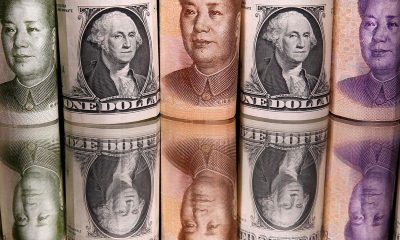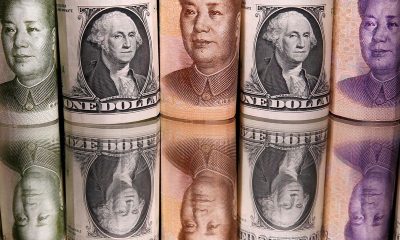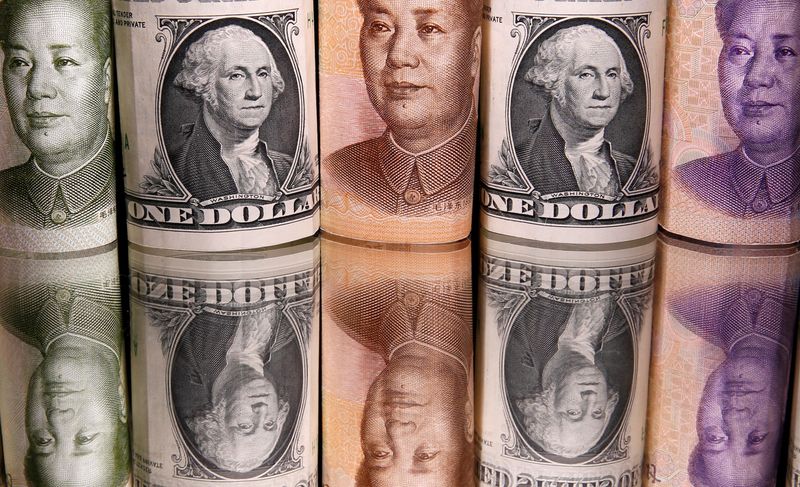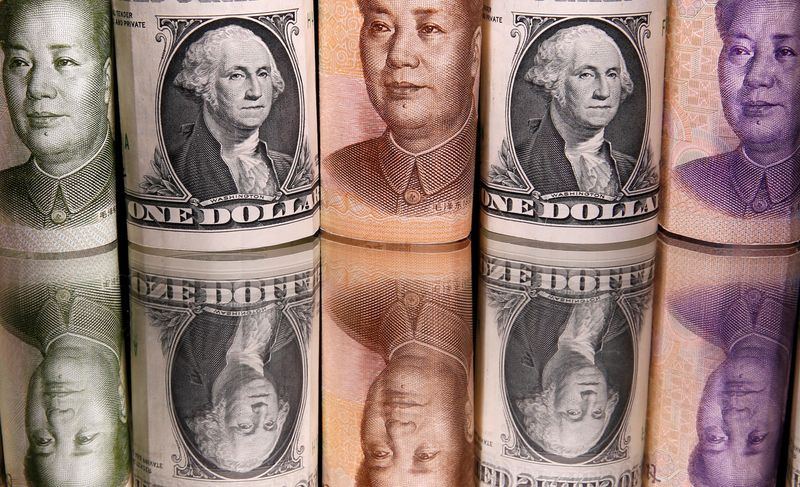Forex
Dollar hits four-month low after Fed pivots, ECB leaves rates unchanged
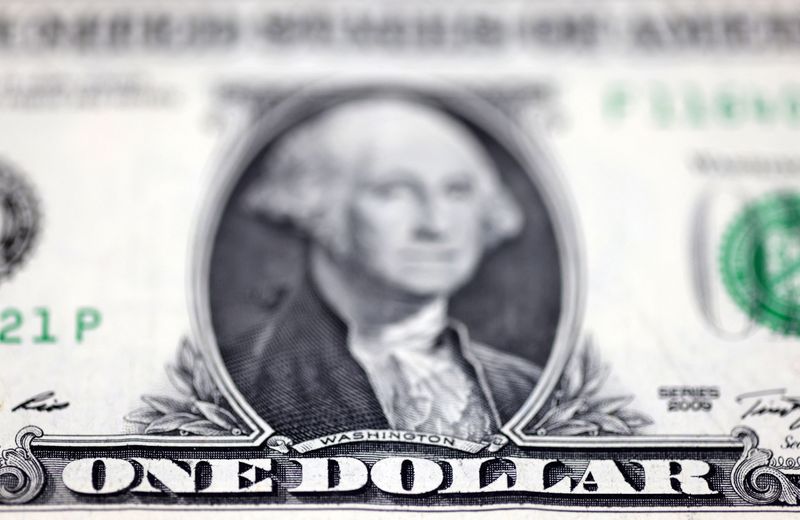
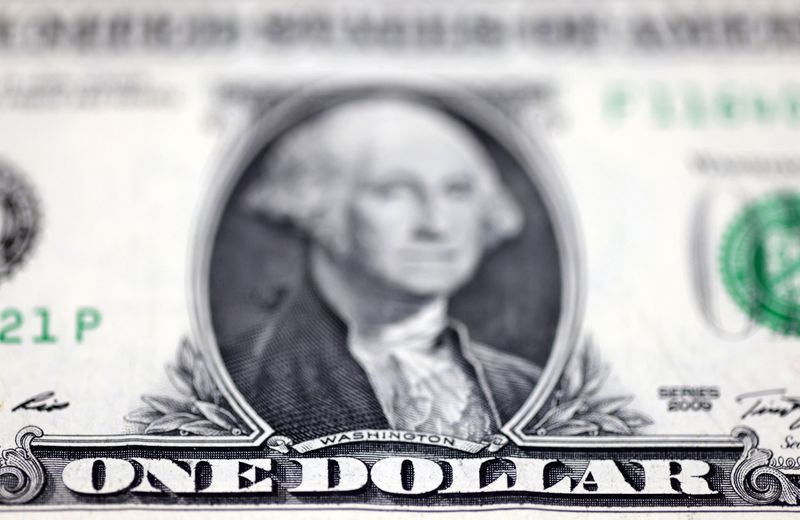
© Reuters. FILE PHOTO: U.S. Dollar banknote is seen in this illustration taken July 17, 2022. REUTERS/Dado Ruvic/Illustration/File Photo
By Samuel Indyk
LONDON (Reuters) -The dollar touched a fresh four-month low on Thursday after the Federal Reserve indicated that its interest-rate hiking cycle has ended and that lower borrowing costs are coming in 2024.
On a busy day for policy announcements in Europe, the euro held gains after the European Central Bank said policy rates would be set at sufficiently restrictive levels for as long as necessary and the pound rose after the Bank of England held interest rates in a “finely balanced” decision.
Meanwhile, the Norwegian crown strengthened after a surprise rate hike and the Swiss franc was little changed after the Swiss National Bank held rates.
Fed Chair Jerome Powell said at Wednesday’s Federal Open Market Committee (FOMC) meeting that the historic tightening of monetary policy is likely over, with a discussion of cuts in borrowing costs coming “into view”. The Fed’s projections implied 75 basis points of cuts next year, from the current level.
“The Fed was very dovish yesterday,” said Athanasios Vamvakidis, global head G10 FX strategy, BofA Global Research, who was expecting the 2024 projections to show three rate cuts.
“This was a close call and the strong consensus in any case was for a balanced tone by Powell. Instead, Powell doubled-down, with a very dovish tone.”
The , which measures the greenback against a basket of currencies, slipped as far as 102.27, its lowest since Aug. 10. It was last down 0.5% at 102.37.
Markets are now pricing a 90% chance of a rate cut in March, according to CME FedWatch tool, compared with around 65% a week earlier. Traders are pricing around a 20% chance that the Fed cuts rates next month.
CENTRAL BANKS IN EUROPE OFFER MIXED OUTLOOK
The ECB kept interest rates at a record high, as expected, and offered no clues about whether easing of policy was around the corner, even as markets have priced rate cuts from early next year.
The euro, which had already been higher against the weak dollar, held gains after the announcement. It was last up 0.4% at $1.0922 before ECB President Christine Lagarde’s press conference at 1345 GMT.
The Swiss National Bank had earlier kicked off Europe’s busy day of central bank announcements by holding rates steady at 1.75%, as expected. The franc remained weaker against the euro but a touch stronger against the softer dollar after the announcement, as the SNB acknowledged that inflationary pressure has decreased slightly over the past quarter.
The Norwegian crown meanwhile rose against both the euro and dollar after the Norges Bank unexpectedly raised rates by 25 basis points to 4.5%, adding that they would likely stay at that level for some time.
The pound rose 0.8% against the dollar to $1.2725, a two-week high, after the BoE voted 6-3 to leave interest rates at 5.25%, with policymakers Meg Greene, Jonathan Haskel and Catherine Mann preferring to have raised the bank rate by 25 basis points to 5.5%.
In contrast to the Fed, the committee said that interest rates would need to stay high for “an extended period”.
“The main message remains that rates will remain high for as long as it takes, which effectively is a push-back to market pricing early cuts,” said BofA’s Vamvakidis.
“It was broadly as markets were expecting, but looks hawkish compared with the very dovish Fed yesterday,” Vamvakidis added.
The yen continued to strengthen in the wake of the greenback’s tumble, climbing to its highest since July 31 at 140.95 per dollar. It was last up around 0.8% at 141.75 per dollar.
Expectations that the Bank of Japan (BOJ) could end negative interest rates at its monetary policy meeting on Dec. 18-19 have largely been dampened, but the BOJ could make tweaks to its statement, such as language that the bank will not hesitate to ease further if necessary, said Masafumi Yamamoto, chief currency strategist at Mizuho Securities.
That kind of change could be regarded as “one step toward normalisation… so that could be positive for the Japanese yen”, he said.
The Australian dollar, meanwhile, hit a more than four-month high at $0.6728 after domestic net employment jumped by 61,500 in November, compared to an increase of around 11,000 that markets had been forecasting.
The rose more than 1% versus the greenback to as high as $0.6249, despite data showing the New Zealand economy unexpectedly contracted in the third quarter.

 Forex3 years ago
Forex3 years agoForex Today: the dollar is gaining strength amid gloomy sentiment at the start of the Fed’s week

 Forex3 years ago
Forex3 years agoUnbiased review of Pocket Option broker

 Forex3 years ago
Forex3 years agoDollar to pound sterling exchange rate today: Pound plummeted to its lowest since 1985

 Forex3 years ago
Forex3 years agoHow is the Australian dollar doing today?

 Cryptocurrency3 years ago
Cryptocurrency3 years agoWhat happened in the crypto market – current events today

 World3 years ago
World3 years agoWhy are modern video games an art form?

 Commodities3 years ago
Commodities3 years agoCopper continues to fall in price on expectations of lower demand in China

 Economy3 years ago
Economy3 years agoCrude oil tankers double in price due to EU anti-Russian sanctions

